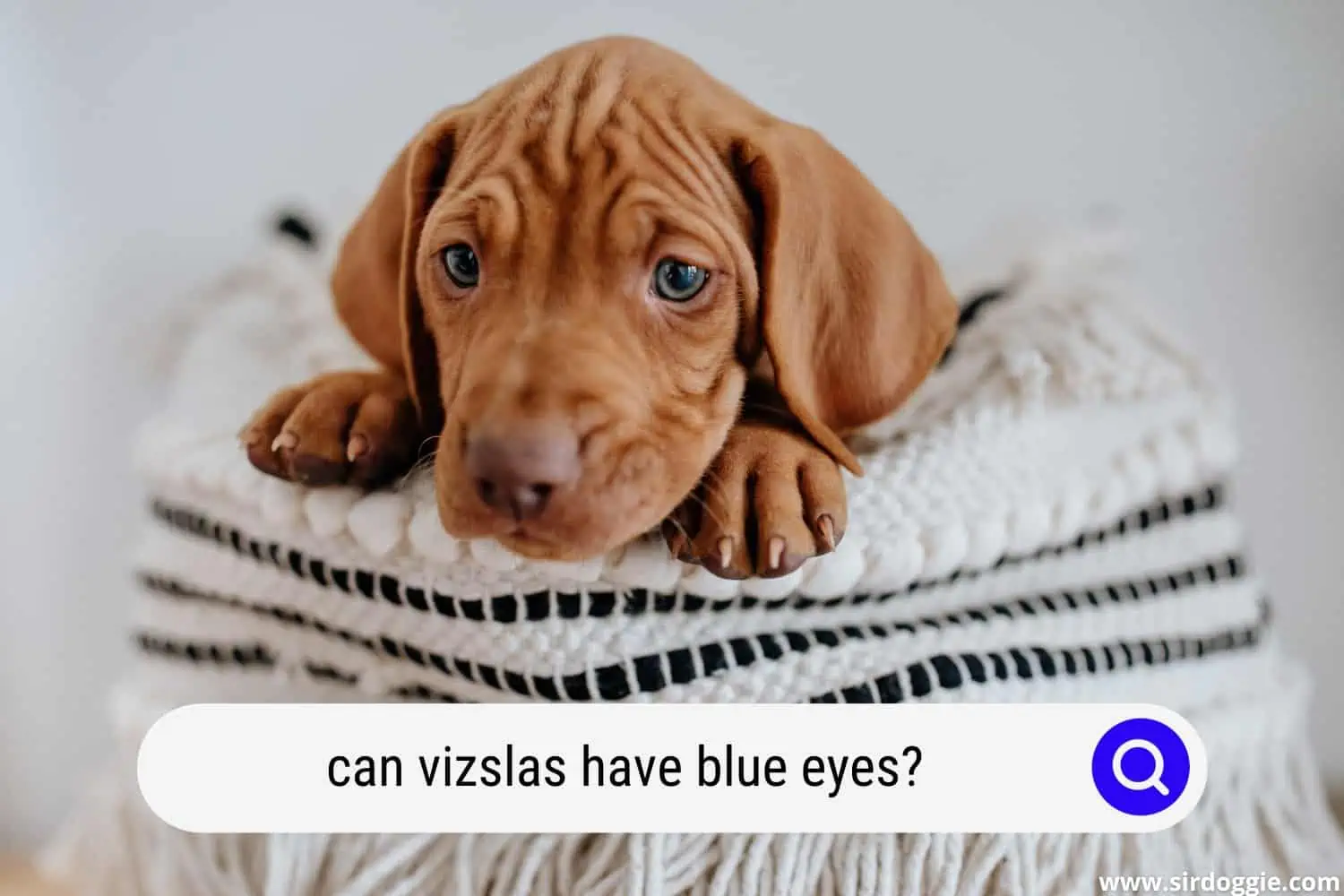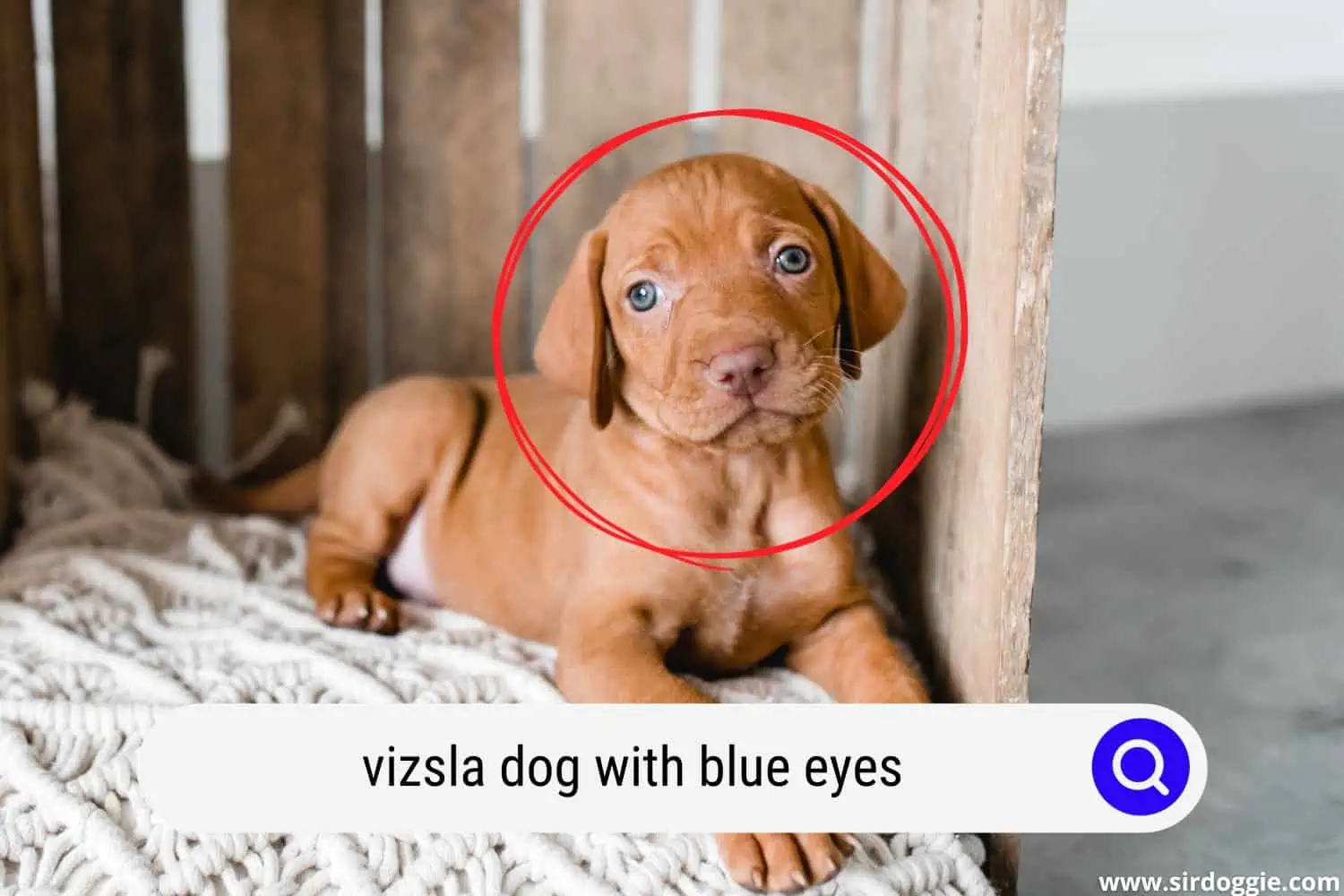Can Vizslas Have Blue Eyes?
Vizsla breed dogs are incredible animals that possess overflowing energy and enormous loyalty to their owners. Normally, when people decide to acquire a canine of this type, they usually fall in love with the naked eye with a Vizsla puppy’s physical appearance.

That is because these puppies are cute and adorable, and they also have beautiful reddish-gold fur color and blue eyes.
One of the most charming appearance factors of newborn Vizsla puppies is their beautiful blue eyes. Like most baby animals, a canine of this breed starts with noticeably blue eyes, which are much brighter than those of other species.
They cling to those eyes for a few months until they finally transform into a yellow-orange hue.
Can My Vizsla Dog Have Blue Eyes?
Yes, Vizsla puppies can have blue eyes. However, this is only when they are small canines, as their eye color turns amber as time passes.
The color of the Vizslas’ eyes can change. That is normal, especially when it has to do with the growth of the puppy.
It is similar to the case of Weimaraner dogs and how their body transforms as they grow.
Can All Vizsla Puppies Have Blue Eyes?
Usually, when a Vizsla dog is born, its eyes are a bright blue hue. This characteristic makes canines look more adorable and cute than they already are.
Generally, even if your puppy is 14 weeks old, its eyes will still be blue.
Afterward, the blue-green eyes turn gray and end in a warm yellowish-brown or amber as the dog matures into an adult.
How Does the Color of My Vizsla Dog’s Eyes Change?
When Vizslas are young, they may have green, gray, or blue eyes. However, these animals begin to grow, and their eyes change to a yellow or amber color.
The whites of a Vizsla’s eyes are barely visible, as the blue or amber color completely encompasses the animal’s eye shape.
When these canines are adults, the color of their eyes is amber or gold. Also, the color of the leather around the Vizsla’s eyes should be red, just like the fur.
Why Does My Vizsla Dog Have Blue Eyes?
Typically, a Vizsla puppy can have blue eyes due to a lack of melanin. That blue is not a color since what we really see is the product of the sun’s reflection. Reflection, the refraction of sunlight, makes the animal’s eyes appear blue.
Melanin production, at the time of Vizsla’s birth, has not yet started. After a few weeks, melanin should begin to be produced.
The eye area responsible for this function is the stroma. If the amount of melanin was kept very low, the dog is likely to have blue eyes even in adulthood. The case of albino animals is different. They can also have red eyes with similar tones.
Other less common reasons why a Vizsla or any other dog may have blue eyes at birth are:
Gen Merle
That is the most common reason why a dog has blue eyes: a side effect of Gen Merle, which dilutes the pigment’s random parts in the nose and iris. In this case, the dogs also have spots on the muzzle. There are even cases in which the animal has an iris of each color or half of one tone and the other half of another. Often also, those with this anomaly are deaf.
Pigmentation Problems
Another cause of blue or light eyes in dogs is that some of the cells in their body are not capable of producing pigment. They usually have white spots around their eyes and on their face, as well as a pink nose.
C Series
When a dog is affected by the “C Series,” it suffers from a condition known as albinism. It is likely that they have blue or light eyes and a completely pink nose, in addition to having white skin.

Split Gene
The last of the causes in dogs with blue eyes is a gene with nothing to do with coat color. Dogs that live in cold areas and are used by Eskimos can have one eye of each color regardless of the coat’s hue. That is very rare in Vizslas, but it could happen depending on the genes of their dominant parents.
Many Vizsla puppies can be born with blue eyes due to the lack of pigmentation and melanin in their bodies. That is why, as time passes and the animal begins to grow, its body will have developed enough melanin to change the color of its eyes to an amber tone.

Family Dog Expert Author
Hi there! I’m Stuart, a devoted dog lover and family dog expert with over a decade of experience working with our furry companions. My passion for dogs drives me to share my knowledge and expertise, helping families build strong, loving bonds with their four-legged friends. When I’m not writing for SirDoggie, you’ll find me hiking, playing with my beautiful dog, or studying music.